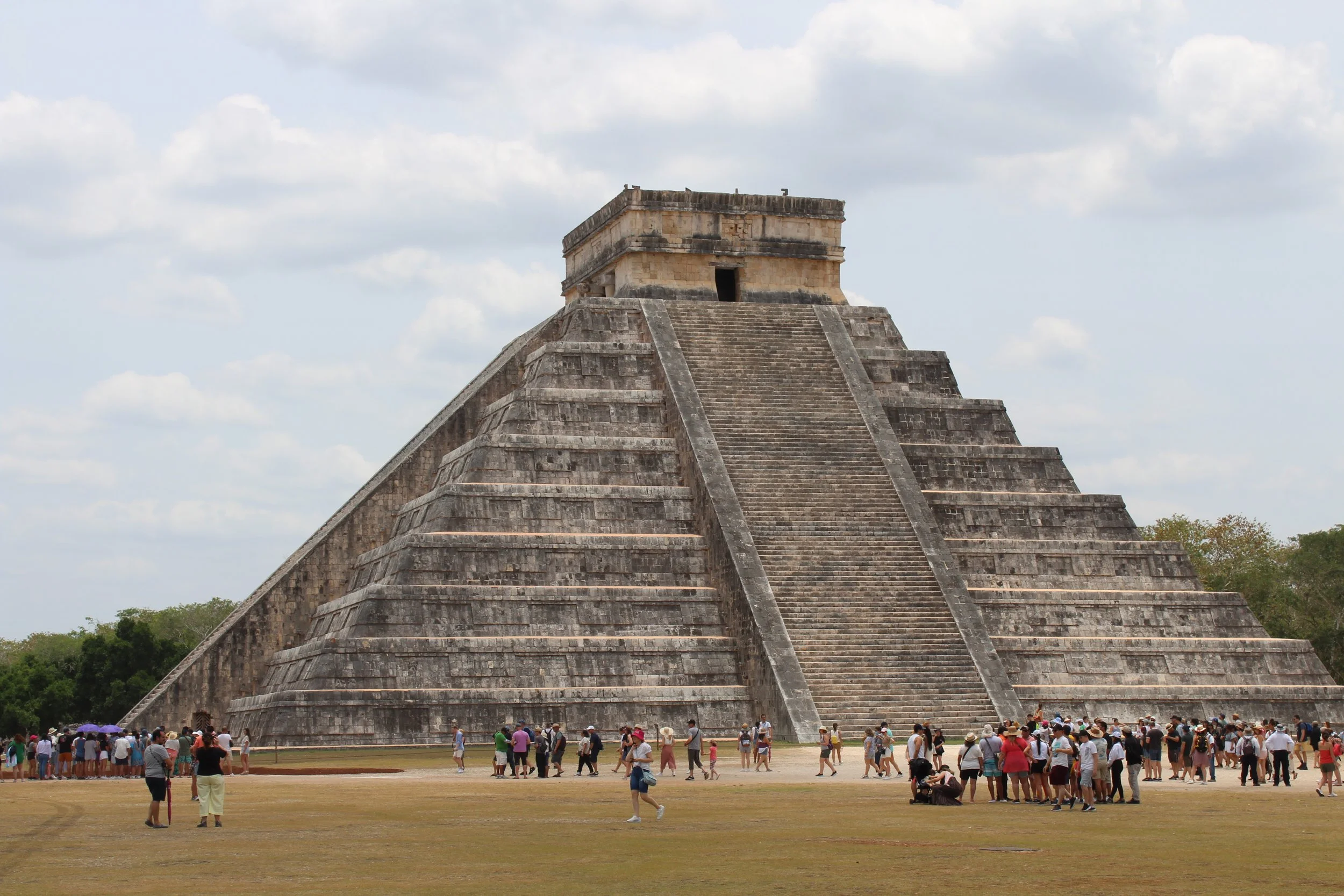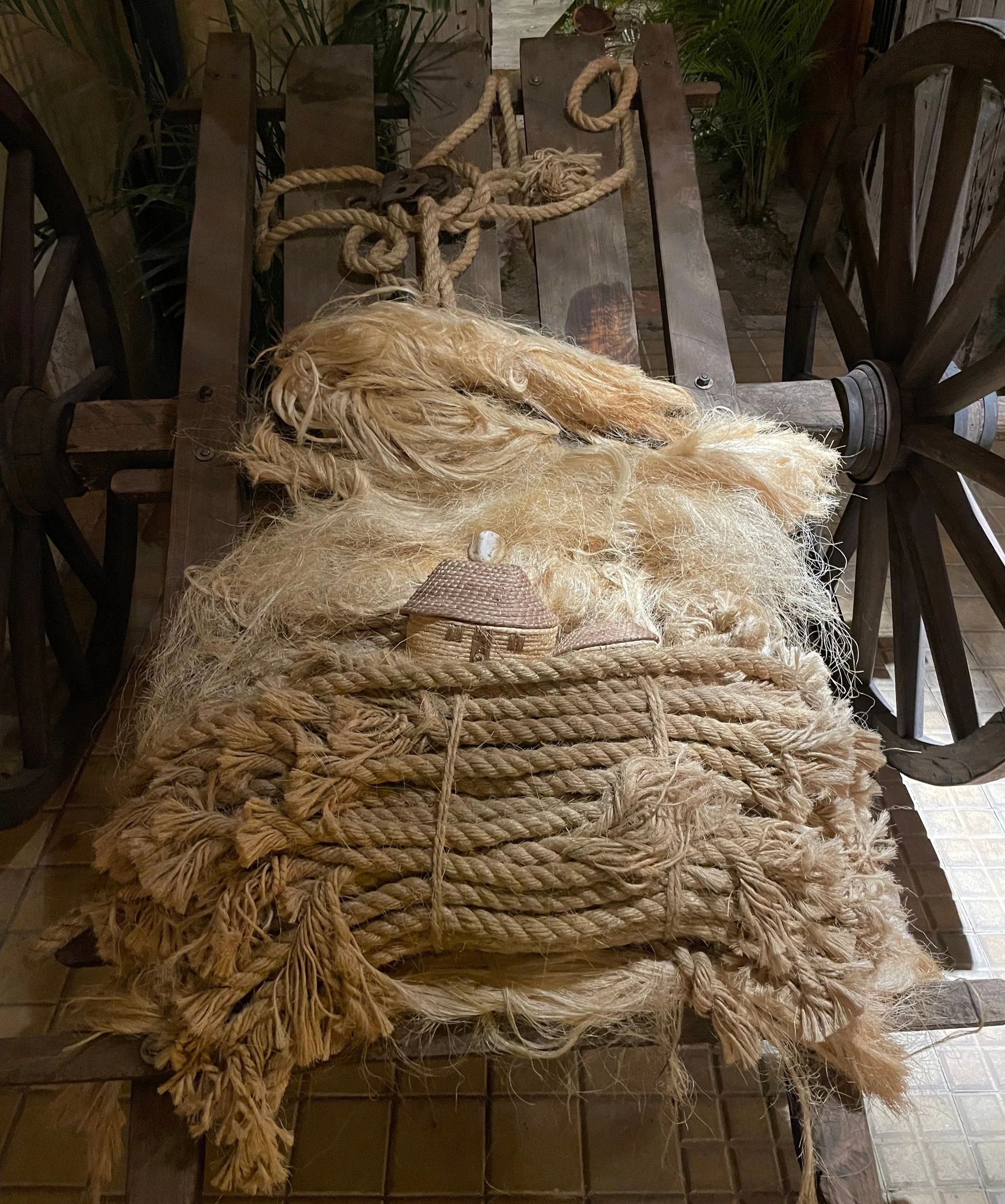The History of Sisal - Mayan Tale
Welcome to ROHO
This blog series follows the captivating history of Agave sisalana.
Taking you on a journey through the history of one of the world’s lesser-known but highly impactful agave species. From its contribution to the development of ancient civilisations in Mexico to the plains of Africa, where hundreds of people were involved in processing a valuable commodity, then onward to the future of agave spirit production outside of Mexico.
What do the great Mayan pyramids, like Chichen Itza pictured here, have to do with Agave?
All Agave are native to Central America, with the highest species diversity in Mexico. The importance of agave to the ancient civilisations in Mexico is clear in the folklore of some Indigenous tribes where there is a goddess of Agave. Most people are aware of the delicious distillate extracted from various Agave species, but often, other uses of the plant are overlooked. If we journey to around 600 A.D, whilst Europe was heading deeper into the Dark Ages, over in Mexico the great Mayan Empire was thriving. During this time there were many pyramids constructed, and vast civilisations developed around these ceremonial structures. The building of these great structures was made possible in large part due to an important material that the Mayans learnt to extract from certain Agave plants. This exceptional material is a strong fibre found in the leaves, extracted by thrashing and then drying out the remaining fibre.
Originating from around the port town of Sisal in the Yucatan peninsula, Agave sisalana is a species that has particularly tough fibres within the sharp and spiny leaves (Sisal is locally known as Henequén and is a descendent of Agave fourcroydes). It is said that the rope made out of twined sisal fibres were used to carry the very stones that were used in constructing the many Mayan pyramids. Sisal was also used to make several different products, including hammocks, netting and paper and clearly played an important role as a commodity for the Mayan people. And this tradition of using natural fabrics still persists today where you’ll often find products manufactured out of sisal in stores across the Yucatan Peninsula.
It was a few hundred years after the collapse of the Mayan Empire, in the early 1800s, that the next chapter in our sisal story begins, and the legend of ‘green gold’ will be told.
The History of Sisal - Green Gold
Welcome to ROHO
This blog series follows the captivating history of Agave sisalana.
Taking you on a journey through the history of one of the world’s lesser-known but highly impactful agave species. From its contribution to the development of ancient civilisations in Mexico to the plains of Africa, where hundreds of people were involved in processing a valuable commodity, then onward to the future of agave spirit production outside of Mexico.
There are many complicated and interwoven stories of international trade having considerable socioeconomic impact that can have lasting effects and permeate many areas of society. What I’d like to lay out for you in this blog is how Agave sisalana has its own complicated history in the very place it originates, the heart of the Yucatan in a town nearby the state capital of Merida.
Through the 18th and 19th Centuries, Mexico’s economic development was marked by the dominance of large agricultural estates (haciendas), which concentrated wealth and power in the hands of elite families, often of Spanish descent. This system perpetuated deep social and economic inequalities, as landless peasants and Indigenous communities were exploited for labour while family-owned wealth controlled commerce and political influence. This characterises precisely how, when demand for high-performing fibres that could be extracted from sisal increased, the haciendas growing sisal in the Yucatan proliferated, benefiting the land-owners and exploiting the local labour force
Sisal, also known as Henequen, has a deep history in the Yucatan Peninsula
When travelling in Merida, you may find remnants of the industry that was so influential in the Yucatan Peninsula during the 1800s. An industry that contributed to large amounts of wealth being generated but alas did not have a fortuitous ending.
Vast areas of land were cultivated for growing sisal and these plants were harvested to produce huge quantities of the valuable natural fibre. As demand continued to increase so did the volume of sisal fibre exported, with the majority of fibre being fabricated into heavy-duty ropes used for large shipping vessels. Interestingly, still to this day, sisal outperforms any synthetic material with regards to degradation and retaining strength, with the added benefit of not producing microplastics and polluting the environment. The success of these haciendas that capitalised on the demand for sisal fibres led to a lot of wealth being generated by the families of land-owners, so much so that the sisal agave was coined the term ‘Green Gold’. At the height of the boom, there were nearly 1,200 haciendas within an 80 km radius around the city capital of Mérida. By 1915 during the peak of production, more than 1,200,000 sisal bales were shipped out of Yucatán and into the United States. The numbers became so high that almost 70 percent of all cultivated land in Yucatán was devoted to the henequen production
The grand Hacienda of Yaxcopoil
All was well for a few decades as the demand from exports to the US continued to support the business of producing sisal fibres. However, as often happens with markets, cheaper and easily accessible synthetic materials created a dramatic decline in demand for sisal and the industry collapsed.
During the greener years of sisal’s proliferation, a scientist from halfway around the world had a curious idea to take production to an unlikely destination and turn fortunes for himself. This is where we are headed to next, circumnavigating the globe to the tropical coast of East Africa.
The History of Sisal - White Gold of Tanganyika
Welcome to ROHO
This blog series follows the captivating history of Agave sisalana.
Taking you on a journey through the history of one of the world’s lesser-known but highly impactful agave species. From its contribution to the development of ancient civilisations in Mexico to the plains of Africa, where hundreds of people were involved in processing a valuable commodity, then onward to the future of agave spirit production outside of Mexico.
The imperialist era brought about many advances in technology and global trade networks, fuelled by the invention of steam engines and the construction of large ships capable of traversing further distances in ever faster times. It was these particular developments that enabled the dispersion and proliferation of our intrepid sisal plants.
Towards the end of the 19th century, a German agronomist named Dr. Richard Hindorf had an outlandish plan to take a few hundred sisal plants from the Yucatan Peninsula and plant them in East Africa, in what was then known as Tanganyika. The tropical coast of Tanzania and Kenya have an incredibly similar climate to that of the Yucatan Peninsula and even have quite similar geology of predominantly limestone bedrock.
The legend has it that Dr. Hindorf, upon seeing an article from Kew Gardens, organised for 1,000 sisal plants to be shipped from the Yucatan port. The shipment took a rather circuitous route via Hamburg and finally to the port of Tanga in Tanzania (a territory that used to be known as Tanganyika). The lengthy journey was unfavourable for the sisal plants, and a mere 68 survived, but as is testament to the hardiness of Agave plants, this was enough to propagate considerable numbers of sisal that was then exported globally. The success of this agricultural endeavour provided sisal another nickname of ‘White Gold’. The exports of sisal grew considerably, and the extent of sisal farming spread to coastal regions in neighbouring Kenya.
Drying white gold in Tanga
After WW2 the territory of Tanganyika was handed over to the British, who controlled the territory until Tanzanian Independence in 1961. During this time Sisal production increased considerably, making up 40% of all exports and peaking at 200,000 tonnes in 1958. Sadly, mismanagement and the rise of synthetics that replaced natural fibres collapsed the sisal industry, which today amounts to only 8 per cent of 1958 levels.
Unfortunately, the proliferation of sisal to neighbouring Kenya also experienced the emblematic boom and bust that took place globally due to slowing demand in the 1960s. This is where we are headed next, for the last chapter in the sisal story, to find out what cultures and traditions have developed around sisal and where innovation is starting to lift the plant back toward its prior valued state.







